Christopher Monckton of Brenchley answers the campaign of assaults on the reputation of Dr. Willie Soon, an unsalaried astrophysicist at the Harvard-Smithsonian Center for Astrophysics.
The recent campaign of concerted assaults on Dr Soon’s reputation
Recently the Boston Globe, The New York Times, the Washington Post, the Guardian, Scientific American and even Nature, as well as many other media outlets and environmentalist weblogs, have mounted what appears to be a costly, malevolent and carefully coordinated campaign of assaults on the reputation of Dr Willie Soon, falsely alleging that in several of his published scientific papers he had failed to disclose that some of the funding for his research has come from fossil-fuel interests.
This campaign of libels was calculated to damage Dr Soon’s reputation, to undermine the credibility of his research results, and to threaten his employment at the Center for Astrophysics by improperly suggesting that he has acted unethically and dishonestly. I propose to knock the worst of these libels on the head. This will be a long read, but well worth it.
Dr Soon’s affiliation to the Harvard-Smithsonian Center for Astrophysics
The Harvard-Smithsonian Center for Astrophysics is, in the words of its current Director on its 50th anniversary in 2005,
“the world’s largest and most diverse center for the study of the Universe, comprising the astronomy and astrophysics programs of two renowned scientific institutions: the Smithsonian Institution and Harvard University. 2005 marks the 50th anniversary of Smithsonian Astrophysical Observatory’s move to Cambridge to affiliate with Harvard in the partnership that would, in 1973, be formalized as the Center for Astrophysics.”
Dr Soon has been a solar physicist at the Center for a quarter of a century. His research specialty is the influence of changes in solar activity on the Earth’s climate and the study of stars of the same type as the Sun. Since 1994, together with various distinguished co-authors, he has published some 60 research papers on these and related topics.
Indeed, the director of the Center himself, in an interview with a journalist for the Chronicle of Higher Education who later wrote a libelous article stating that in his published research papers Dr Soon should not have said he is affiliated to the Harvard-Smithsonian Center for Astrophysics, regrettably lent some credence to this allegation by stating that “from a legal point of view” there was “no such entity as the Harvard-Smithsonian Center for Astrophysics”:
“The problem, according to Charles R. Alcock, a Harvard professor of astronomy who also serves as director of the Harvard-Smithsonian Center for Astrophysics, is that the ‘center’ refers primarily to a shared set of physical facilities. Almost everyone working at those facilities, Mr. Alcock said, is either an employee of Harvard or an employee of the Smithsonian, a federally administered collection of museums and research centers.
“‘From a legal point of view,’ he said, ‘there is no such entity as the Harvard-Smithsonian Center for Astrophysics.’ And Mr. Soon is employed only by the Smithsonian, Mr. Alcock said. ‘It’s always been that way. He has never had any Harvard appointment.’”
The director of the Center is not only a Harvard professor but also director of the Smithsonian Astrophysical Observatory, which shares the same postal address and premises at 60 Garden Street, Cambridge, Massachusetts as the Center.
The fact that in 2005 the director himself had described the marriage of the Observatory and Harvard as having been “… formalized as the Center for Astrophysics” suggests that, contrary to the director’s present statement that the Center does not exist as a legal entity, there was in fact some formal process, event, act or deed by which the entity known as the “Harvard-Smithsonian Center for Astrophysics” came into some form of legal existence in 1973, when the Observatory moved to Cambridge “to affiliate with Harvard” in a “partnership”.
Furthermore, funding proposals for Dr Soon’s research, written on the letterhead of the Observatory and signed by the director, bear the following box that appears prominently at the foot of the page:
The Smithsonian Astrophysical Observatory
is a member of the
Harvard-Smithsonian Center for Astrophysics
Either there is, as the director’s 2005 statement published on the Center’s own website states, a legal entity of some sort that has operated since it was formalized in 1973 as the “Harvard-Smithsonian Center for Astrophysics”, in which event the director’s present statement to the contrary is false and damaging to Dr Soon’s reputation; or there is no such entity as the Harvard-Smithsonian Center for Astrophysics, in which event the director’s signing and presenting funding proposals in the name and on the letterhead of an observatory that is prominently described in those proposals as “a member” of that non-existent entity – proposals which were intended to lead and did lead to the award of grants – seem more than somewhat irregular, if not illegal.
Furthermore, Dr Soon has never made any statement in any of his published papers, or anywhere else as far as he can remember, to the effect that he has a “Harvard appointment”, as the director’s remarks to the Chronicle of Higher Education imply. He has always stated, correctly and surely blamelessly, that his affiliation is to the “Harvard-Smithsonian Center for Astrophysics”.
At no time has anyone at the Observatory or the Center told Dr Soon that he should not state in his published papers that he is affiliated to the Harvard-Smithsonian Center for Astrophysics, to which – after all – the Observatory is by the director’s own admission itself affiliated. On the contrary: a previous director had given specific instructions, not since rescinded, that all researchers should identify themselves in their published papers as affiliated to the Center.
Nor can it be credibly asserted that the Center was until recently unaware of the manner in which Dr Soon had declared his affiliation in his scientific papers over the past quarter of a century: for a member of senior management (a botanist) has seen fit to pass judgment on the quality of Dr Soon’s research (in astrophysics), from which it may legitimately be inferred that he had read – or at any rate ought to have read – at least one of Dr Soon’s 60 published papers in order to come to a view on the quality of his research.
I now turn to that widely-published allegation – unsupported by evidence or even by argument – that Dr Soon’s research is not of “the highest quality”.
An attack on the quality of Dr Soon’s published scientific research
The Chronicle of Higher Education quotes Mr W. John Kress, the Smithsonian Institution’s “interim under-secretary for science”, as follows:
“Mr. Kress even admitted a lack of confidence in his own employee’s work. ‘Up until now, it has not been an issue of our scientists’ not disclosing their sources of funding,’ he said. ‘As far as we can see, up until just recently, that appeared to be the case with Willie Soon. He was publishing science. He may have interpreted his results in various ways, but the actual data and the results reflected his research, which, although I would say is not the highest-quality research, was research carried out in a scientific process.’”
Now, Dr Kress is entitled to his own private opinion as to the quality of Dr Soon’s research. But, as an office-holder in an institution to which the Observatory is affiliated and with which the Center is connected, Dr Kress is not entitled to fuel the fire and compound the libels against Dr Soon, a researcher of long standing at the Center, by offering to the news media a gratuitous, unsupported and insupportable allegation that his research is unmeritorious.
For in speaking thus, and in not making it clear whether his opinion (whether expert or inexpert) was that of the Smithsonian, he was bound to give the impression that the Center had “a lack of confidence” in Dr Soon’s work.
What makes Dr Kress’ crass remark still more offensive is that the Smithsonian had given Dr Soon an award in 2003 for
“detailed scholarship on biogeological and climatic change over the past 1,000 years … in official recognition of work performance reflecting a high standard of accomplishment”.
In 2004, Dr Soon received the Petr Beckmann award of the Doctors for Disaster Preparedness for
“courage and achievement in defense of scientific truth and freedom”.
In 2014, he received the Courage in Defense of Science Award, with a monetary prize, from the George C. Marshall Institute. The award was presented at the Heartland Institute’s Ninth International Conference on Climate Change held in Las Vegas that year.
The Smithsonian Institution’s statement of February 22, 2015
Under the pressure of complaints from external lobbyists about a recent paper co-authored by Dr Soon in the Science Bulletin and about other earlier research contracts most details of which had been divulged in releases of information to Greenpeace or its associated front groups over many years, the director of the Center for Astrophysics has announced that its Inspector-General will conduct an investigation into this affair for the Center.
On February 22, the Smithsonian Institution issued the following statement:
“The Smithsonian is greatly concerned about the allegations surrounding Dr. Willie Soon’s failure to disclose funding sources for his climate change research.
“The Smithsonian is taking immediate action to address the issue:
“Acting Secretary Albert Horvath has asked the Smithsonian Inspector General to review the matter.
“Horvath will also lead a full review of Smithsonian ethics and disclosure policies governing the conduct of sponsored research to ensure they meet the highest standards.
“Wei-Hock (Willie) Soon is a part-time researcher at the Smithsonian Astrophysical Observatory in Cambridge, Mass. He was hired to conduct research on long-term stellar and solar variability. The Smithsonian does not fund Dr. Soon; he pursues external grants to fund his research.
“The Smithsonian does not support Dr. Soon’s conclusions on climate change. The Smithsonian’s official statement on climate change, based upon many decades of scientific research, points to human activities as a cause of global warming.”
The Center should certainly investigate the attacks against Dr Soon. In normal circumstances one would expect any such review to conclude that the orchestrated campaign against him is improper and was motivated not by any desire to reach the truth but by a malicious intent to cast doubt upon the value of his published research and to threaten his position at the Center.
That said, the statement from the Smithsonian above makes it apparent that a disinterested review of the matter by a senior Smithsonian staff member is now not possible.
As will be explained below, in conducting any such review the Smithsonian would in effect be investigating its own contracts with the funders of Dr Soon’s research, about which it already knows all that there is to know. It is the Center, not Dr Soon, that accepted the financial support from external entities; the Center agreed, signed and holds the contracts.
An attack on Dr Soon’s scientific views about the climate question
The concluding paragraph of the Smithsonian’s statement of February 22 says:
“The Smithsonian does not support Dr. Soon’s conclusions on climate change. The Smithsonian’s official statement on climate change, based upon many decades of scientific research, points to human activities as a cause of global warming.”
This offensive passage is simply unacceptable. First, it is improper for the Smithsonian to prejudge the issue to the extent of saying it does not support Dr Soon’s “conclusions on climate change” (whatever that might mean in their interpretation of the matter). It is not the business of the Smithsonian managers to say – except in peer-reviewed papers by their researchers – whether or not they support any of their staff members’ conclusions on climate change, or on any other topic.
Secondly, the only “conclusion” by Dr Soon “on climate change” to which the Smithsonian statement implicitly refers is that human activities are not
“a major cause of global warming”.
For otherwise why would the institution have bothered to mention that its own
“official statement on climate change … points to human activities as a cause of global warming”?
Prejudice against Dr Soon is again evident in the wording that has been selected.
Just as it is the responsibility of individual researchers to be able to provide scientific evidence to back research papers or public statements that they issue in their area of expertise, so it is no less incumbent on academic institutions such as the Smithsonian not to misrepresent the scientific conclusions of its researchers.
Let me be quite clear. At no time has Dr Soon ever said, written, or even implied that human activities are not
“a cause of global warming”.
Indeed, throughout the Science Bulletin paper on Why models run hot, it is self-evident not only that I and my co-authors, including Dr Soon, accept that our returning some CO2 to the atmosphere from which it originally came will cause some global warming, but also that we are thoroughly familiar with the scientific reasons why – all other things being equal – more CO2 in the atmosphere will cause some warming.
The true scientific debate is not about whether CO2 causes some warming. Rather, the debate is about how much warming it will cause.
The Smithsonian’s false implication that Dr Soon had reached the “conclusion” that human activities are not
“a cause of global warming”
is, in the circumstances, gravely damaging to him, since it suggests that he repudiates (for instance) such proven scientific results as the fundamental equation of radiative transfer.
Allegations of undeclared conflict of interest
The central allegation that stands against Dr Soon is that he had had a “conflict of interest” in that he had received much of his research funding from fossil-fuel corporations and foundations but had failed to declare it in a dozen of his 60 published papers.
The Smithsonian’s statement of February 22, 2015, regrettably lends credence to these allegations by stating that its inspector-general proposes to investigate allegations surrounding
“Dr. Soon’s failure to disclose funding sources for his climate change research”.
It would have been pardonable to talk of investigating whether “allegations that Dr. Soon had failed to disclose funding sources for his climate change research are true or false”.
However, the Smithsonian’s unfortunate wording, which had not been cleared with Dr Soon in advance as it should have been, strongly suggests the Center has already decided he had dishonestly failed to disclose his sources of funds. The wording as it stands is an open invitation to unethical “journalists” to persist in their libels against him.
Accordingly, at least two assertions in the Smithsonian’s short statement of February 22, 2015, are untrue, unfair, and calculated to be profoundly detrimental to Dr Soon’s scientific reputation.
The conclusion is obvious. It is essential that any investigation into this matter be chaired not by the Smithsonian’s inspector-general but by a senior scientist altogether unconnected with the Smithsonian, with Harvard, with the Observatory, or with the Center, and who is wholly independent of their management.
The non-governmental grant-funding process
In answering the untruthful criticisms that on frequent occasions Dr Soon had had but had failed to disclose a financial conflict of interest, I shall begin by explaining how the grant-funding process works for the many scientists, like Dr Soon, who receive no stipend from the Center but must earn their living out of grants made by government bodies, corporations, or foundations to whom they must apply for grants. Individual grants are usually tied to specific research projects.
At the Center, the rule – which Dr Soon has always scrupulously followed – is that all grant applications for proposed scientific research must be approved in advance both by the director’s office and by his department, the Center’s Solar, Stellar and Planetary Sciences Division. For this reason, all grants awarded are automatically known to the Center at once. Dr Soon has no power to accept any grant unless and until the office of the Director has approved not only the amount and source of the grant but also the research purpose for which it was awarded.
Dr Soon, simply by stating his affiliation to the Center, as he has done without complaint from anyone for decades in all his published papers arising from research supported by specific grants, has made full and sufficient disclosure that he has no conflicts of interest regarding his research: for the Smithsonian Institution’s Statement of Values and Code of Ethics, which applies to the Center, specifies that his superiors themselves provide the oversight to prevent any undue influence by donors, sponsors or other outside parties on any scholarship or publications that stem from externally donated funds.
The Center deducts 30-40% of any external grant to cover its own overhead costs. Indeed, the director of the Center has recently admitted that Dr Soon ends up with less than half of each grant. Much has been made of the fact that he has brought in some $1.2 million in grants over ten years. That means he received an average of less than $60,000 a year, out of which he had to pay his research costs, including travel, equipment, materials, publications and research assistance. On what little was left, he has managed to feed his young family. In some years, he’d have been better off flipping burgers.
As a working scientist, Dr Soon has no authority to sign any research contract to receive any grant, let alone to decide or to dictate the terms of such contracts. Those matters are reserved to the Center.
As has been shown by public reproduction of facsimiles of the contracts between the Smithsonian and relevant external providers, Dr Soon’s signature is not on any of the contracts that have been made with the Observatory to support his research. It is, therefore the Center that carries the responsibility for accepting and properly administering the external payments that support his work. He is merely employed by the Center to discharge research that is paid for out of the external grants for which the Observatory has entered into contracts.
Given that external contracts are signed and held by the Observatory, and given that in 2012, in response to 2009/2010-onward series of requests by Greenpeace under the Freedom of Information Act the Institution chose to make public the details of all such contracts that had been used to fund Dr Soon’s stipend, claims that he has failed to disclose information about who has funded his past research are manifestly false.
Neither Dr Soon nor any of the many other scientists employed by the Center on external grants actually write or sign grant contracts. Instead, as is both proper and conventional in large research institutes, contracts are prepared by the Observatory’s administrative staff. After a contract relevant to Dr Soon’s expertise has been written and approved by the outside funders, his job is to undertake scientific research in the agreed area, and to report the results in papers written either on his own or in conjunction with his scientific colleagues. He is paid by the Observatory, not by any external funders, to carry out those duties.
The 2015 Science Bulletin paper Why models run hot
The current press campaign against Dr Soon began after he had co-authored a paper titled Why models run hot: results from an irreducibly simple climate model, published in January 2015 in China’s leading learned journal of scientific research, the Science Bulletin of the Chinese Academy of Sciences, co-sponsored by the National Natural Science Foundation of China.
I was the lead author of the paper, written with Dr Soon, Professor David Legates and Dr William Briggs, Statistician to the Stars. We concluded – in line with a substantial and growing body of recent peer-reviewed research on the question how much global warming our industrial activities may cause – that doubling the CO2 concentration in the atmosphere, which, on the average of the six projections made by the IPCC in 2007 will not occur for at least 100 years (IPCC 2007, p. 803, Table 10.26), might eventually make the world warmer by as little as 1 Celsius degree, not the 3, 5, or even 10ºC that the Intergovernmental Panel on Climate Change and various government scientists have tried to suggest.
Neither I nor any of my co-authors received any funding of any kind from any source for any part of any research conducted by us in the preparation and writing of this paper. The paper was researched and written entirely in our own time and at our own expense. As we correctly stated to the journal, therefore, we have no conflict of interest whatsoever.
Each of the four authors of the Science Bulletin paper has a lively and expert academic interest in our subject, and we wrote our paper because we considered – rightly, as events have turned out (for there have already been more than 22,500 downloads either of the abstract or of the full paper) – that other researchers would find our simple model of the climate interesting and helpful.
Both Dr Legates and I have had our scientific integrity challenged for the same reason that Dr Soon’s integrity is being challenged: to divert attention away from the embarrassing scientific questions we have raised about the present “official” version of global-warming science.
It is surely time to focus on the science itself. Using our model, anyone with a little knowledge of math and physics can determine climate sensitivity relative to CO2 concentration changes not unreliably by using nothing more complex than a pocket calculator. Within hours after the Daily Mail ran a strongly supportive news piece about our paper, an EU-funded environmentalist extremist group had telephoned round and obtained instaquotes from half a dozen rent-by-the-hour “scientists” about our paper, but, as our point-by-point refutation demonstrates, several of them had not even read it and not one had raised a serious scientific objection to it.
In the Science Bulletin paper we have made climate science accessible to all – and scientists worldwide are responding to our initiative with enthusiasm. Our paper, available online at www.scibull.com, is the most-downloaded scientific paper in the 60-year archive of the Science Bulletin. It has been downloaded an order of magnitude more often after just one month than its nearest rival has accrued since almost a quarter of a century ago.
The content and conclusions of Dr Soon’s papers
By the very nature of the scientific research Dr Soon conducts and publishes, a prejudice in favour of any particular viewpoint at the behest of any funding entity cannot be credibly alleged against him. It is noteworthy that in the recent campaign of libels against him there has not been, as far as I know, a single suggestion that any particular result or conclusion was reached in part or in whole because either that particular research project or his scientific work in general was funded by fossil-fuel interests.
Even the Center’s dreadful interim science czar has conceded that what Dr Soon is publishing in the journals is recognizable as science. It is not propaganda, for neither the subject-matter nor the methodology nor the results nor the conclusions of his research is of a character that permits tampering or skewing to suit a particular political or financial vested interest.
Our paper for Science Bulletin is a case in point. It was not a paper that could, by its nature, in any circumstances be reasonably considered to have given rise to any conflict of interest on my part or on the part of any of my co-authors. For in it we merely introduced and explained our simple model, setting out in detail the origin or derivation of each equation and the appropriate interval for each relevant parameter, and supporting and illuminating our methodology and conclusions with almost 60 references to previously-published reviewed papers in the learned journals of climatology.
A model is not in itself a conclusion: it is an instrument that anyone can scrutinize and, if thought fit, use. We demonstrated in our paper that if one were to use the official values of our model’s parameters the model would generate climate-sensitivity values near-identical to the official values. Our model, therefore, was not in any way tailored to generate artificially low climate sensitivities.
After we had calibrated our model using the official parameter values, we then selected parameter values that we considered appropriate and ran the model again to establish whether it was capable of determining the rate of warming in the 25 years since the IPCC’s First Assessment Report of 1990. Our model indeed faithfully reproduced the observed rate of global warming, which was about half the central rate that the models on which the IPCC had relied had predicted in 1990.
We regarded this experiment as a respectable test of our model, since about half the period from 1990-2014 fell during the warming phase of the Pacific Decadal Oscillation that ended in 2001 and half fell during the subsequent cooling phase. These phases, which last 30 years, giving a 60-year cycle, must be carefully allowed for: otherwise the error made by many early models would arise: they based their predictions on the warming rate from 1976-2001, a period wholly within a warming phase of the Pacific Decadal Oscillation. This was one reason for the models’ exaggeration of the predicted rate of global warming.
Anyone reading our paper may or may not agree with our choice of parameters and hence with our revised estimates of climate sensitivity, which are very much lower and very much closer to observed reality than those of the more complex models. Since we very plainly stated the official values of all key parameters and explained the fact of and reasons for any departures we had made from those official values in our own determination of climate sensitivity, the entire process was fully transparent, allowing any reader of our paper to substitute his or her own choice of parameter values for ours.
There was, therefore, no prejudice of any kind in our paper, which was a straightforward and very popular account of the principal methods and parameters for determining the climate sensitivity.
The very popularity of our paper may have been the reason for what appears to have become a concerted and now-prolonged campaign by news media and environmentalist extremist campaigning groups of a certain political stamp to allege that Dr Soon has, but has failed to declare, conflicts of interest in numerous earlier papers authored or co-authored by him.
These allegations were reported gleefully in the Boston Globe, the New York Times, the Washington Post, Nature, Scientific American, and many other media outlets and news pages of science journals in a manner calculated not only to divert attention from the conclusions of our paper but also to damage Dr Soon’s reputation in his scientific calling, to put his employment at the Center at risk, to deter more serious journals from accepting future papers bearing his name as an author, to deter potential funders for fear of adverse publicity, and thus to threaten not only his livelihood but also the science he loves.
The Smithsonian’s application of Freedom of Information rules
An important precedent in the public disclosure of sources of research funding and related research matters that is especially relevant to the matter under discussion was set by the Center for Astrophysics in 2009/2010.
At that time, the Harvard-Smithsonian Center for Astrophysics and the Smithsonian Institution decided – against advice from 58 distinguished scientists, including Dr Soon’s former divisional director, Dr. Eugene Avrett, and a 1993 Chemistry Nobel Prize laureate, Dr. Kary Mullis – that Dr Soon’s personal emails, and all related grant proposals and details, should be made publicly available to Greenpeace in response to a request made under the Freedom of Information Act, from which the Smithsonian is by law substantially exempt.
It was obvious what would happen. The information that Dr Soon had truthfully disclosed to the Center for its internal purposes has now been made public and has been unfairly exploited by external vested interests to launch attacks on him, his colleagues, and the Center because the interests of these outside groups are threatened by his scientific findings.
Greenpeace itself has been notoriously coy about the hundreds of millions it receives in funding every year. In at least one country its charitable status has been extinguished; in another it has attracted condemnation from the government for willfully causing damage to the environment. Yet it presumes to lecture Dr Soon about morality.
The news media’s skewed coverage of climate science
The adequacy, truthfulness and motives of the media in their everyday coverage of the global warming issue fall to be questioned, together with the degree to which headlines about the details of Dr Soon’s external research support are really addressing a significant issue alongside other climate-related news.
CO2 emissions have actually risen since 1990 at a rate faster than the IPCC’s “business-as-usual” prediction made that year.
Nevertheless, (though this crucial and revealing fact has never been reported in any mainstream news medium: you’ll only find it at breitbart.com), global temperature has risen at less than half the rate the IPCC predicted in 1990 with what it called
“substantial confidence”.
According to the Remote Sensing Systems’ satellite global-temperature dataset, there has now been no global warming at all for more than the past 18 years. All other datasets show a little warming. Most are within statistical shouting distance of the RSS result.
Over those same 18 years, atmospheric CO2 has risen by 10 percent, which represents close to one-third of the human-related CO2 returned to the atmosphere from which it came since the start of the Industrial Revolution.
Hurricanes, tropical cyclones, typhoons, extra-tropical storms, floods, and droughts were all formerly predicted by the IPCC to increase in intensity, frequency, or duration.
None has done so, and there is simply no empirical evidence that the occurrence of weather-related disasters is on the increase. What can be safely said is that the number of deaths caused by extreme weather has declined rapidly.
Also, sea level has been predicted to rise rapidly, but the European Envisat satellite showed sea level to have risen at a rate of just 1.3 inches per century from 2004–2012.
At the same time, the GRACE gravitational-anomaly satellites, the most accurate method of measurement we have, showed sea level actually falling from 2003–2009.
According to Professor Nils-Axel Mörner, who has written more than 600 learned papers in his 50-year career studying sea level, global average sea level may not be rising at all at the moment.
Global sea-ice extent shows practically no trend since the satellites first began looking in 1978.
Very few of the surely not uninteresting facts in this summary of recent evidence relevant to manmade climate change has been reported properly in the media. Some news media, such as those whose “journalists” have libeled Dr Soon, have done their best never to publish any of it.
It is surely repellent that mainstream science and environmental “journalists” have failed to report either the total absence of global warming in the past decade and a half, or the near-total absence of warming’s predicted and supposedly apocalyptic consequences. And yet at the same time these persons have the impertinence to call Dr Soon dishonest for allegedly having failed to disclose grants that he has in fact always promptly, properly, and fully disclosed to his employing institution, which evaluates the grants and accepts them only if they find no conflict of interest.
How does a scientist engender a conflict of interest anyway?
The notion of “conflict of interest” declarations is a relatively new phenomenon for scientific publications, especially in solar and climate physics. Though declarations of interest are a well understood and applicable procedure in political or financial matters, it is far from clear that they have any part to play in science.
The reason is that in science it is the scientific method itself that ensures the accuracy, applicability, and usefulness of results.
The idea that because money to conduct research is derived from, say, the EPA, NSF, or Exxon-Mobil implicates a scientist in a conflict of interest is not fruitful, for by extension then all scientists have a conflict of interest all the time (unless they have private means and are working unpaid; and even then they may be living off the interest from ill-gotten investments in, say, the hydrocarbon business).
Science is different from politics or commerce in that who pays for a piece of research – whether it should be Genghis Khan or Mother Teresa – is simply irrelevant to making judgments about the validity of the research product, which stands or falls depending upon its consistency with the facts and the ability of other scientists independently to confirm the results.
What conflict of interest can possibly arise if a scientist simply conducts his research and experiments driven by his own curiosity and ability, and then reports his results in a paper submitted to a scientific journal?
Dr Soon, for instance, simply do not know what interests the funders of his research have, though he does know that he has not been influenced by any of them. He does not know what conclusions they would like him to reach. He simply writes his scientific proposals, which are submitted to the potential funders, who are asked if they are willing to fund the proposed research. Where is the conflict of interest in that?
Furthermore, should anyone want the full list of the agencies that have funded Dr Soon, from his post-doctoral days in 1991 till now, that list is available from the Center. Dr Soon’s sole interest is in continuing to do scientific research wherever he can be useful.
Conclusion
In conclusion, it would be useful for readers to understand that over the past few years Dr Soon has probably made less take-home pay annually than a very junior EPA employee, or the janitor at the IPCC. He could certainly earn much more money by working on other scientific topics or by identifying himself as supporting the notion of a human-caused global warming crisis.
He loves his science, he loves his country and he pays his taxes alongside every other citizen.
Telling people that Willie Wei-Hock Soon is so corrupt that he is trying to hide all the cash he has received from corporate sources for his quarter of a century of research at the Center for Astrophysics is false, mean-spirited, and insulting. Allowing such attacks to stand, and to allow politics and fear tactics to silence Dr Soon or any other scientist, or to censor scientific publications, would not only be a personal calumny against him: it would also be a blow against scientific freedom of expression the world over.
The author gratefully acknowledges the assistance of Professor Robert Carter in drafting this article.
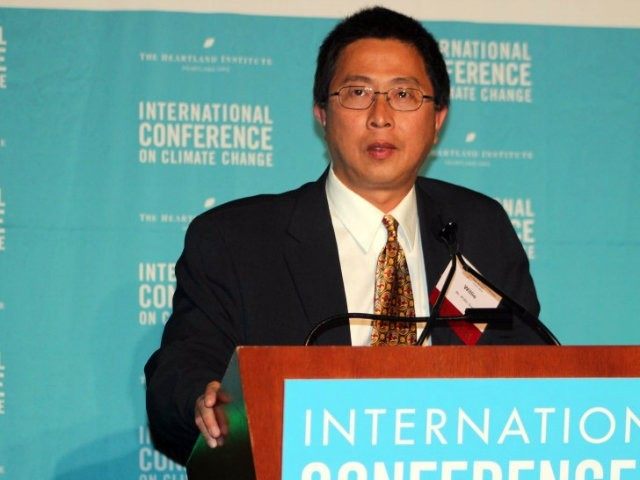
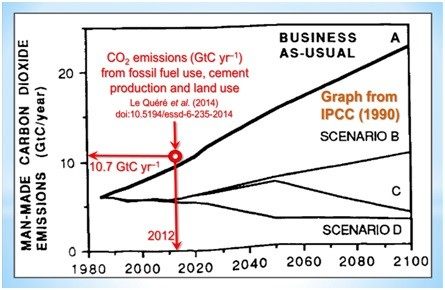
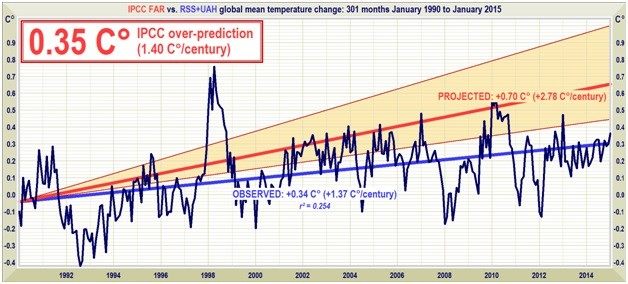
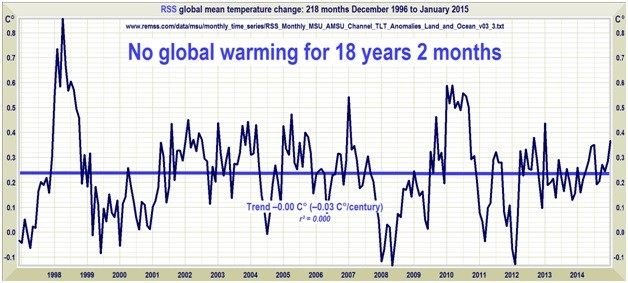
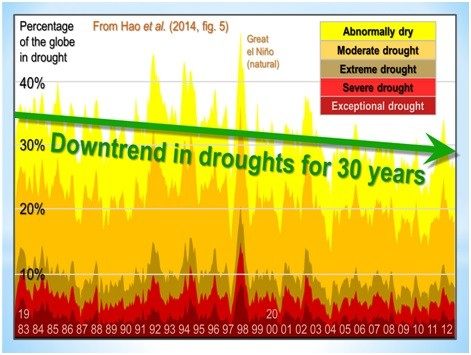
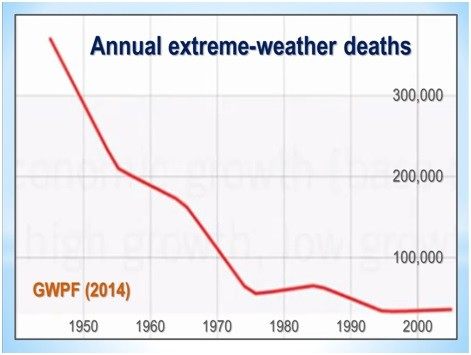
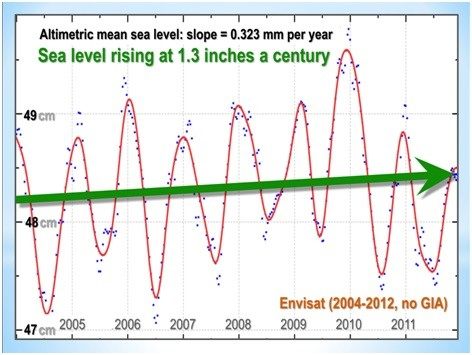
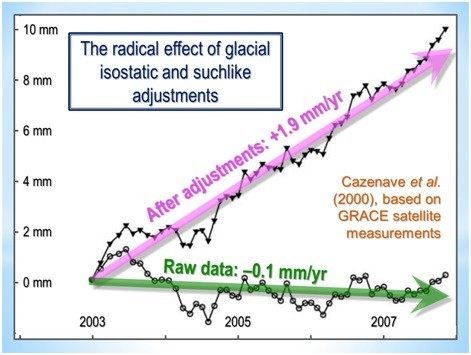
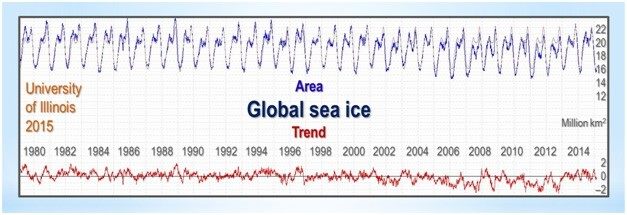
COMMENTS
Please let us know if you're having issues with commenting.